At the tip of one of the world’s longest Peninsulas is a popular tourist town known for its stunning beaches, world-class golf courses, and lively nightlife. All this and more makes Cabo San Lucas a great place to live in Mexico for those who love the beach and an active lifestyle.
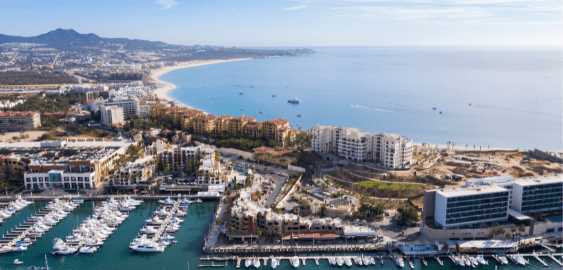
Cabo, as the locals call it, has a growing community of foreigners. And is becoming an increasingly popular place for retirees and remote workers (thanks partly to an expansive fiber-optic network).
Cabo San Lucas offers a good quality of life, with plenty of amenities and services for residents, including supermarkets, hospitals, and many dining options. The city is also home to many luxury developments and has many real estate options, from high-end villas to more affordable condos. While still expensive for Mexico, the cost of living in Cabo is generally lower than in many other major tourist destinations in Mexico, making it a more affordable option for those looking to relocate.
Overall, Cabo is an exciting place to visit or live in Mexico. Offering a mix of adventure, relaxation, and modern conveniences. If you’re looking for a place to call home close to the beach, surrounded by natural beauty, and filled with opportunities for recreation and socializing, then Cabo San Lucas might be the perfect place for you.
Where is Cabo San Lucas Located?
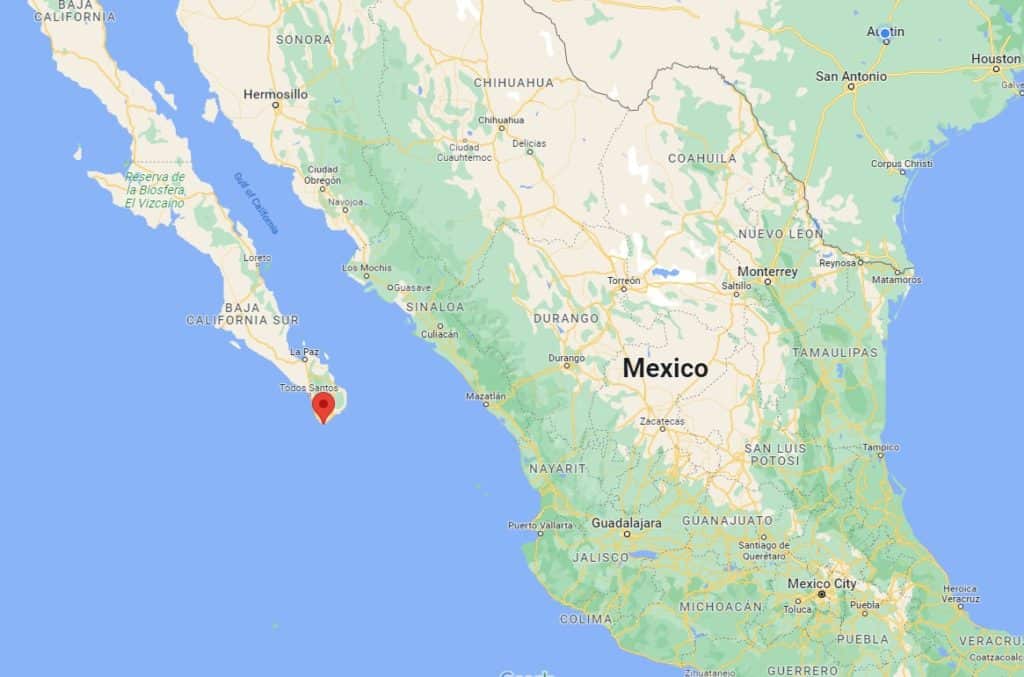
Cabo San Lucas is located at the southernmost end of the Baja Peninsula, where the Pacific Ocean meets the Gulf of California in the State of Baja California Sur.
It’s a two-hour drive from the state capital of La Paz and thirty minutes away from San José del Cabo. The two Cabos or capes are so close to each other the area is called Los Cabos.
If Los Cabos looks isolated from the rest of Mexico, that’s because it is. At the far western end of the country, with the ocean on three sides and over seven hundred miles of sparse desert to the north, Los Cabos is geographically on its own.
How to Get to Cabo San Lucas
Los Cabos is geographically remote, but that doesn’t mean it’s hard to get there. The San José del Cabo airport is just 45 minutes down a well-paved highway. This international airport, one of the busiest in the country, has regular flights to all over Mexico and North America, including Denver, Los Angeles, Vancouver, Calgary, New York, and Toronto.
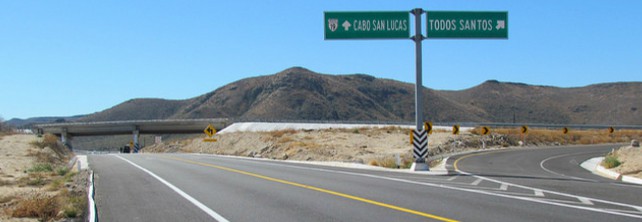
Some people choose to drive to Cabo. And Highway 19 is well-paved and modern.
One long road down the peninsula ends at Los Cabos. Unlike much of the rest of Mexico, you will not need a Temporary Import Permit (TIP) if you bring your foreign-plated vehicle to the Baja Peninsula.
You will, however, need to get Mexican auto insurance.
You may be interested in This Article Is Living in Los Cabos Right For You?
Getting Around Cabo San Lucas
The compact nature of the downtown means that most of the main attractions in Cabo are within walking distance of each other.
However, if you venture farther afield, consider other transportation options. Some people bring their car, but be aware that parking downtown can be expensive and limited, especially during the high season. Also, driving at night is not recommended because poorly lit roads make seeing the free-ranging livestock in the street difficult.
Still, your vehicle will give you the freedom and flexibility to explore independently beyond the city.

Taxis are popular and plentiful but expensive in Mexico. Fares to and from the so-called tourist corridor between the Cabos usually start at around 300 pesos and quickly climb from there. A taxi ride to San José del Cabo can be over 1000 pesos. Uber and Didi are also options.
Buses like Cabo Baja Plus run between the two Cabos. They pick up and drop off passengers anywhere along the route for just a few dollars.
For something different, consider taking a water taxi. These boats travel between the marina and the more popular beaches, letting you enjoy the sights. Of course, you’ll need to agree on a price with the water cabbie, but they usually run around 200 pesos per person per trip.
Population in Cabo San Lucas
Cabo San Lucas is home to around 80,000 people.
In addition, there are thousands of expats, mostly from the United States and Canada. The downtown center is a major tourist destination, and Cabo is one of the largest cities in Baja California Sur. While some rural areas and smaller towns are still nearby, Cabo San Lucas is a bustling city.

Weather in Cabo San Lucas
Cabo is in a tropical desert and never experiences truly cold weather. During the winter months, overnight lows might dip into the mid-50s Fahrenheit, but the temperature climbs back up to the upper-70s or even the 80s during the day.
If anything, it can get too hot for some people at times. Summer temperatures can reach the 90s and above. So when you stay in the area for the summer, seek air conditioning and cool water to beat the heat.
Cabo San Lucas receives very little rain, like much of the Baja Peninsula.
What precipitation it does get usually arrives with hurricanes and tropical storms, which are the most common from late July through September. However, large storms are still possible as early as May or as late as November. Overall, the region often experiences fewer than ten rainy days a year.
Best Time to Visit Cabo San Lucas?
Most visitors come to Cabo in the winter or spring. However, November through April is considered the high season in Cabo.
Not only is the weather comfortable, but it’s also the best time to see the many whales that visit the area.
Many locals say that the best time to be there is in the springtime. After the snowbirds’ departure and before the summer heat onset, Cabo takes on a more relaxed atmosphere. The autumn shoulder season is also ideal for similar reasons.
What to do in Cabo San Lucas
As a well-developed beach resort town, there’s no shortage of activities to fill your days and nights in Cabo. Here are just a few of the popular things to do:
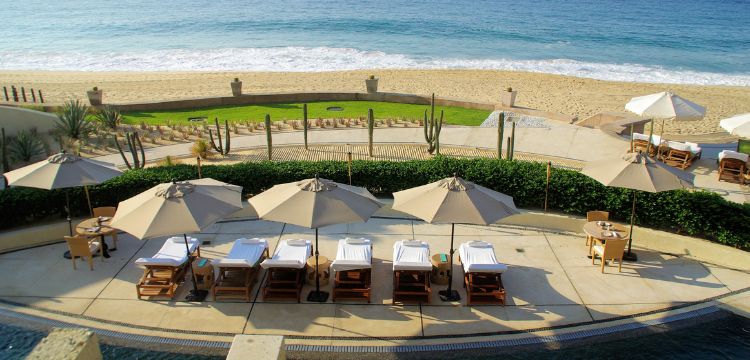
- Hang out at the beach. Several golden-sand beaches are just a mere stroll from downtown. Others are a short taxi, bus, or water taxi ride away. There are beaches with a party vibe, such as Playa El Medano. Others offer a more tranquil atmosphere, like Playa Santa Maria.
- Play golf. You might not expect to see much green in this desert environment, but Los Cabos hosts numerous golf courses. Cabo is an ideal place to hit the links.
- Explore under the sea. Oceanologist Jacques Cousteau called The Gulf of California the “world’s aquarium.” With this sea, known for its biodiversity, at your doorstep, you can dive or snorkel among rare reef species, tuna, and barracuda, as well as impressive underwater formations and even a shipwreck. If you want to witness some of these underwater treasures while staying dry, take an excursion on a glass-bottom boat.
- Go whale watching. Hundreds of whales cruise just offshore of Los Cabos between December and April. One of the incredible things about this place is the vast number of different whale species that can be seen, including humpbacks, fin whales, gray whales, and blue whales. You can often see them directly from the shore. But for a more close-up experience, take one of the whale watch tours that leave from the Marina.

- Experience the desert. Although Cabo is a modern and developed city, just a few miles away is a vast and biologically unique desert. Outdoor enthusiasts can hike among towering cacti, a bird-filled estuary, and summit Mt Solmar for breathtaking views of Land’s End. Outfitters can take you to the desert on horseback, ATV, or camel!
- Go to the spa. Cabo is full of places for relaxation and rejuvenation. You will have many options if you need a massage, bodywork, hydrotherapy, a facial, or anything like that.
- Day Trip to Todos Santos. An hour’s drive north along the coast will bring you to Todos Santos. Known for its artsy vibe and craft shopping, Todos Santos is a popular and easy day trip from Cabo.
- Go fishing. Anglers will delight in fishing off the coast of Los Cabos. Depending on the season, you can hook roosterfish, sailfish, dorado, and tuna. Fishermen regularly catch a 200-pound marlin in the summer and autumn. Cabo San Lucas hosts the world’s highest-paying marlin tournament.
- Enjoy the nightlife. First-time visitors to Cabo will quickly notice its vibrant nightlife scene. Countless clubs, bars, and restaurants stay open in the early morning. Cabo San Lucas has possibilities for every party, whether you enjoy laid-back jazz bars or beach clubs catering to spring breakers.
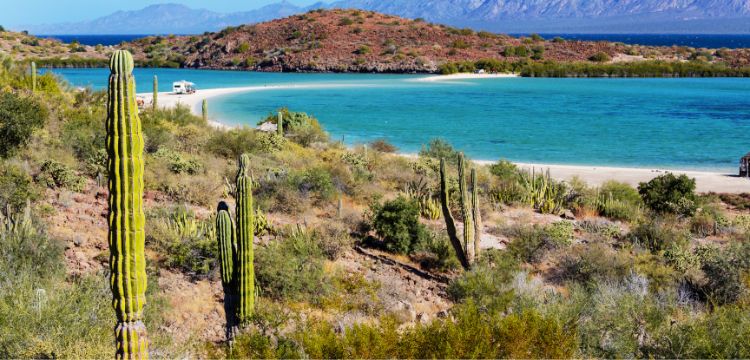
Dining in Cabo San Lucas
Being a global tourist destination, the city is home to food from many cuisines with options for nearly any budget. Fine dining at five-star hotels and hole-in-the-wall taco joints serves the popular Baja-style fish taco.
As you might imagine, fresh seafood is the usual centerpiece of many gastronomic experiences here. It’s about as fresh as it gets, with many restaurants sourcing their seafood directly from the docks.
The cost of dining out in Cabo San Lucas can vary greatly depending on the type of restaurant, the dish you order, and the restaurant’s location. The closer you are to the tourist centers, the more expensive your meals will be.
Here’s a breakdown of what you can expect to spend dining out in Cabo San Lucas.
- A cocktail at a beach club or cantina – MXN300 or USD15
- A couple of plates of tacos and drinks for two at a taqueria – MXN240 or USD12
- Mid-range dinner for two people with food and drinks – MXN1000 or USD50
- Multi-course dinner and drinks for two at an upscale restaurant – MXN3500 or USD175
Popular Neighborhoods in Cabo San Lucas
Where you end up living in Cabo San Lucas will depend on your interests, budget, and residential needs. When choosing a neighborhood, you may want to consider proximity to beaches, shopping, and dining. Here are some of the popular districts to help you pick the best neighborhood:
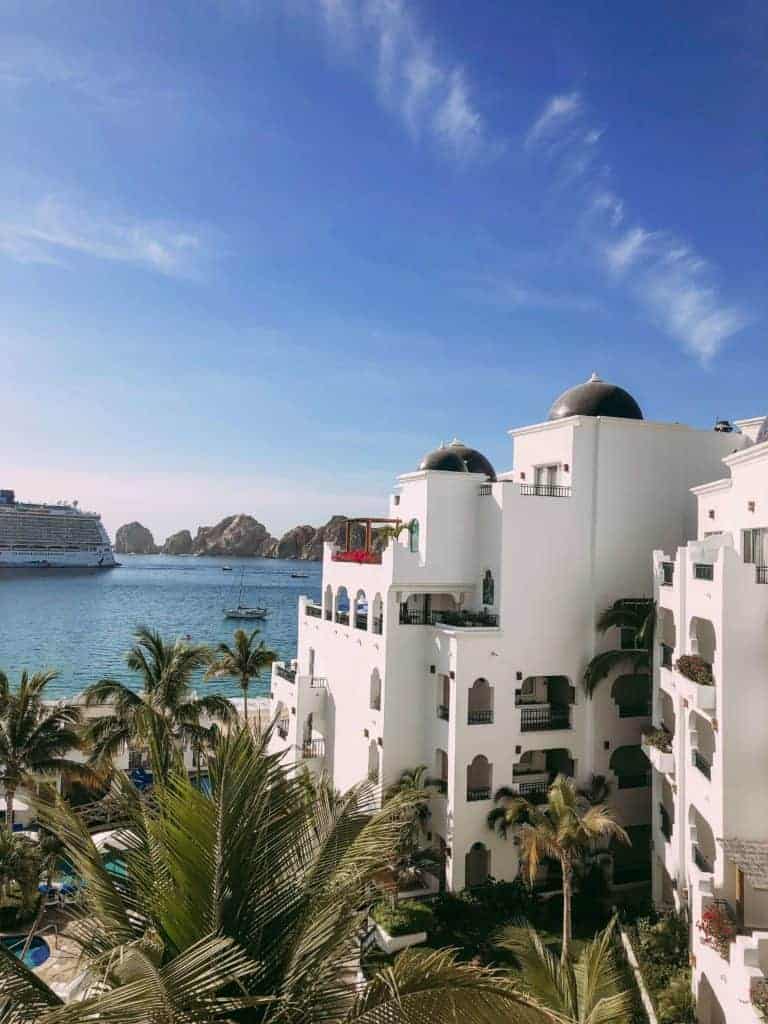
- Downtown. Somewhat less touristy than other parts of the city, downtown Cabo San Lucas has more of a traditional Mexican feel and relatively lower rents. Don’t be mistaken; numerous bars and clubs still cater to rowdy vacationers. However, you’ll also find traditional craft shops, tortillerias, and a community center.
- Playa El Medano. Playa el Medano is the epicenter of tourist activity in Cabo. Between the luxury high-rises, you’ll encounter high-end restaurants, five-star hotels, and a plethora of clubs. The beach, with its many cantinas, is party central during spring break. The housing stock in this area is limited, so if you’re looking to settle in Playa El Medano, you might want to follow these steps to find the best rentals in Cabo San Lucas.
- El Tezal is an excellent location for those who want to be close to the city but far enough away for some relative quiet. Several housing developments offer homes of various sizes and styles. You’ll also be just a stone’s throw from Walmart and Costco.
- Cabo Bello. This gated residential development of single homes just east of Cabo San Lucas along the Tourist Corridor is a popular choice for those looking for more space but with easy access to the city. From one of the several hundred homes in Cabo Bello, you can walk to a hidden swimming cove or a small strip mall, complete with a health clinic and even an Immigration and Naturalization Services office.
- El Pedregal is an upscale neighborhood known for its high-end homes and stunning ocean views. Many of the homes here are more like villas than houses. As a result, home prices in El Pedregal are high but still less than something similar in the United States or Canada.
- Brisas del Pacifico has options for those with a more limited budget. Made up of townhouses and single-family homes, the rents in this subdivision tend to be lower than in the other neighborhoods mentioned here. Yet, you’ll still be living close enough to the major attractions of Cabo San Lucas.
Do You Need to Speak Spanish?
English is regularly spoken in Los Cabos thanks to the economy’s heavy reliance on international tourism. Many businesses, restaurants, hospitals, and legal services have English-speaking staff. With the thousands of foreigners from the US and Canada in the area, it will be easy to connect with an English-speaking community.
However, learning Spanish will open more opportunities and allow you to better connect with your Mexican neighbors.
Staying Healthy
Cabo San Lucas is well-regarded for its excellent hospitals and clinics.
Boasting nine hospitals, Cabo has become a destination for medical tourism. Many people come here specifically for medical treatments in Mexico, which would be much more expensive in the United States.
There are also many private practices and specialists all over the city. Being a major tourist destination, many doctors and nurses in Cabo San Lucas speak English.
Safety in Cabo San Lucas
Cabo is generally considered a safe city. However, there are some common sense precautions that residents should take to minimize their risk of crime or accidents. Here are some tips for staying safe in Cabo:
- Be aware of your surroundings: Stay alert and aware of your surroundings, especially when walking alone at night or in unfamiliar areas. Avoid walking in poorly lit or isolated areas, and be mindful of your belongings.
- Use caution when driving: Driving in Cabo can be challenging, as the roads can be narrow, poorly lit, and crowded. Avoid driving after dark when possible.
- Be cautious of theft: Pickpocketing and theft can be problematic in tourist areas, so keep your valuables and personal belongings safe. Do not carry large amounts of cash or leave your valuables unattended.
- Be careful in the water: Do not go swimming if you are unfamiliar with the rip currents, inebriated, or not a strong swimmer. Obey any warnings on the beach and swim in designated swim areas. Sadly, people drown in the ocean off Cabo’s beaches every year.
- Do not disturb the wildlife: Although they may look cute, sea lions in Cabo, particularly in the Marina, have been known to attack people when disturbed. Rattlesnakes and scorpions are present in the desert near town as well. Stingrays love the shallow sandy waters, so shuffle your feet when wading in the ocean.






